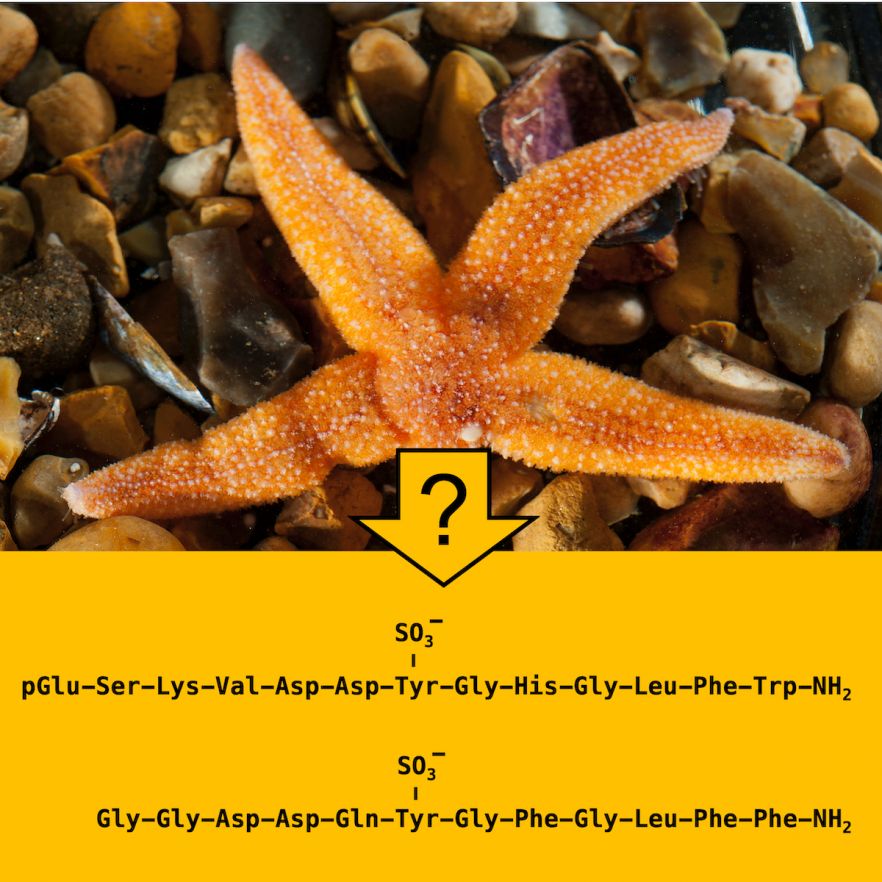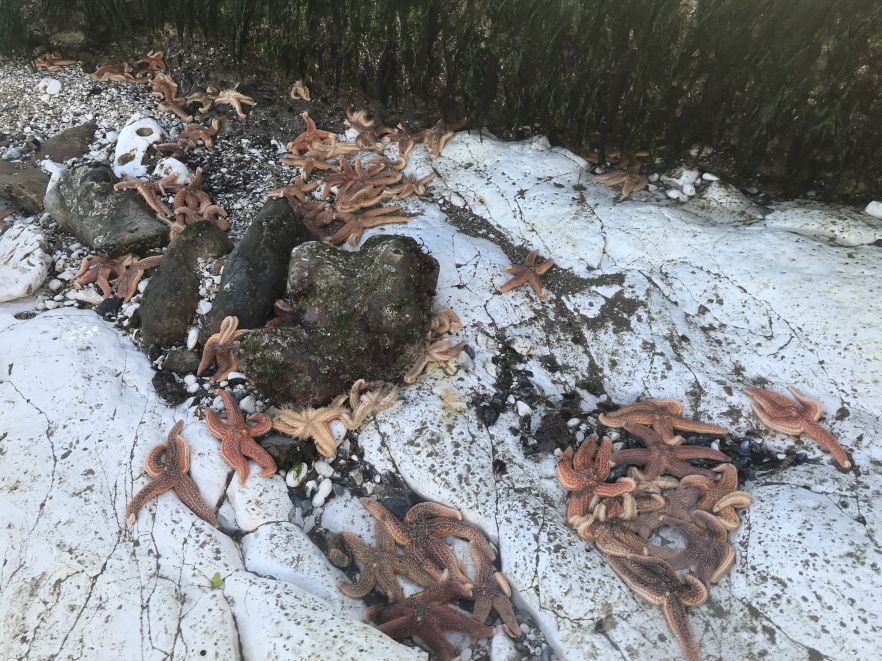How starfish are revealing neurohormone evolution and function
Research in Professor Maurice Elphick’s group within the School of Biological & Behavioural Sciences is using the common starfish Asterias rubens to investigate the evolutionary history of neurohormones as regulators of physiology and behaviour. Recently, whilst investigating the actions of a neurohormone (cholecystokinin or CCK) that inhibits feeding behaviour in humans and starfish, the group made a surprising discovery. When CCK-type neurohormones are injected into starfish, sometimes their arms fall off! This process, known as autotomy, occurs naturally in starfish (and other animals) as a way of surviving attacks from predators. So, for example, if a seagull picks up a starfish from a rockpool and then takes to the skies - the starfish can spontaneously break off the arm in the seagull’s beak so that the rest of the body falls back to earth (hopefully into the sea!). So the starfish survives and can then regrow a new arm where the old one was lost. But it was not known until now how this process of autotomy is controlled by the nervous system in starfish or in any other animals. By discovering this role of CCK-type neurohormones in starfish, the Elphick group has obtained the first molecular insight into the mechanisms of autotomy in animals, which may provide a basis for advances in regenerative medicine.
 Molecular structures of two cholecystokinin-type neurohormones that regulate autotomy in the starfish.
Molecular structures of two cholecystokinin-type neurohormones that regulate autotomy in the starfish. Specimens of the starfish Asterias rubens stranded at low tide on a beach near Margate.
Specimens of the starfish Asterias rubens stranded at low tide on a beach near Margate.- More information: Press Release, Centre for Evolutionary and Functional Genomics.
- Contact: Prof Maurice Elphick

